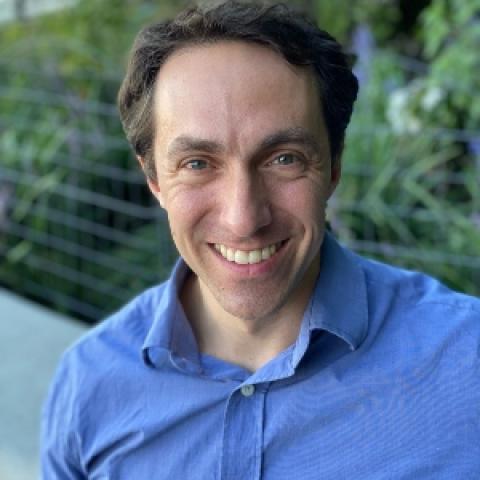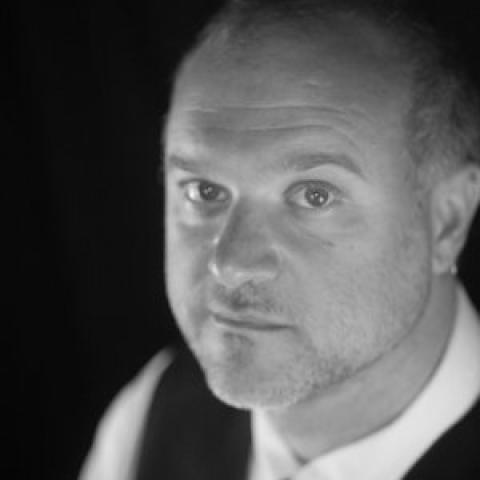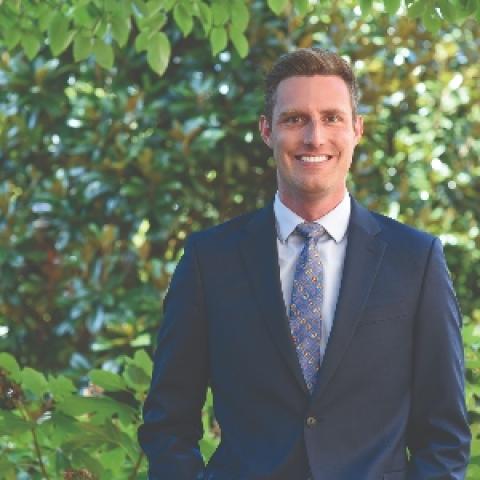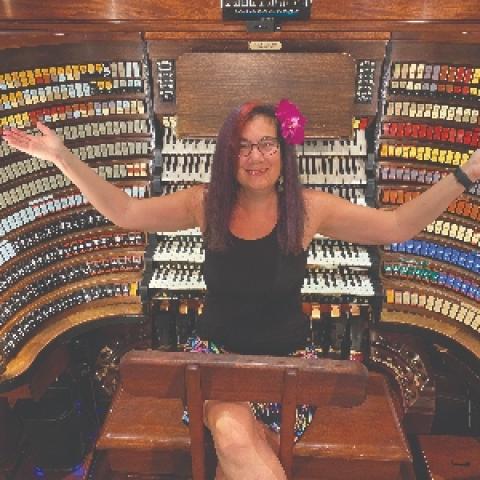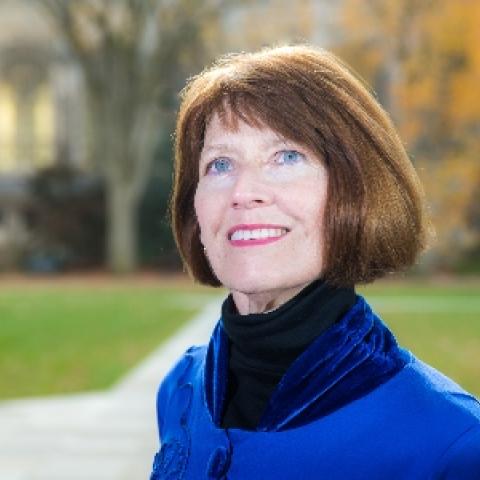Robert McCormick has been organist and choirmaster of Saint Mark’s Church, Locust Street, Philadelphia, since 2016. Previously he held similar positions at Saint Paul’s Church, K Street, in Washington, D.C., and at Saint Mary the Virgin, New York City. He is represented in North America exclusively by Phillip Truckenbrod Concert Artists, LLC.
Editor’s note: Part 1 of this series may be found in the May 2022 issue, pages 20–21.
Introduction
In this, the second in a series of articles exploring various aspects of the art of improvisation at the organ, we hear and learn from Mary Beth Bennett, an adjunct member of the faculty at the University of Richmond, Virginia, and organist of Second Baptist Church in that city. Dr. Bennett has enjoyed a distinguished and multi-faceted career as a church musician in a wide variety of denominations including Lutheran, Catholic, and Presbyterian churches, organ recitalist, teacher, composer, improviser, choral conductor, and accompanist.
I became aware of her as a musician a decade or so ago, and over the past year I have programmed her marvelous and extremely clever Prelude and Toccata on Kingsfold in several recitals. (Consider this a plug for that work and her music in general; this piece is tricky but well worth the effort, and has been a crowd pleaser.) I am delighted and honored by Dr. Bennett’s participation in this series.
Discussion
When, how, and why did you start playing by ear and inventing your own music? How did it coincide with your early music training?
I started playing by ear when I was three years old. My mother told me that once I had just come home from Sunday school and started playing songs I’d heard. I played by ear until the age of five, when I began piano lessons at Lawrence University (Appleton, Wisconsin). However, I found it very difficult to read music. My five-year-old perspective was that I could play much better without it, thank you very much.
So my teacher made a deal with me that if I learned the music as written and played it in our little recital, I could follow it with an improvisation on the same tune. It was a big hit with me and the audience, and I was on my way. I started trying to write down my own music, but found it difficult and time consuming, so I just improvised or played pieces I would hear. Eventually, I made such a fuss that I quit lessons. At one point, the university became curious about me and sent out some people with a big recorder to check me out. My parents were so excited at that development, that back into lessons I went. I studied, unhappily, until I was about ten, when I quit lessons altogether. I didn’t take another formal lesson until college. (Yes, I was a piano teacher’s nightmare.)
How did you employ improvisation in public over the course of your childhood? Did you improvise in church in some way?
I started to play regularly for the 7:00 a.m. service at my Lutheran church on a Hammond B-3 in the chapel when I was ten. Since I couldn’t play any real organ literature, I improvised my own accompaniments to the hymns and chants, adding sporadic pedal when I could. One year I was given the opportunity to play the postlude for a Bible school service on the big pipe organ in the main church. I thought that all postludes were loud and fast, so I pulled out the only piece in my piano repertoire that fit the bill—a so-called Elfin Dance—which I launched into on full organ!
By the time I was in high school, I was playing in a rock band. One thing that I desperately wanted to do in middle and high school was to accompany my instrumentalist friends in the local and state competitions. So, I finally broke down and taught myself how to read music better. I did enough of that in order to be able to land my first real, paid church job.
As a child, when you improvised, did you understand the music theory behind what you were doing, or did that understanding catch up later?
I improvised instinctively in those days, and I wasn’t very adventurous harmonically. I knew nothing about theory, technically, but I knew what worked for me, so I played my versions of all the pop songs and church hymns I heard. I studied theory for the first time as a freshman in college. It made perfect sense to me, and I realized that this was what I had been doing all along.
Was there a watershed moment that inspired you to develop your skills seriously?
When it came time for college, I knew that I wanted to study music, but I didn’t know what instrument to play. (I was playing cello in the orchestra and bassoon in the band.) I ended up going to Stetson University (Deland, Florida) on a cello scholarship. But before I got there, I attended a concert by Paul Jenkins on the large Beckerath organ there. I was blown away by the organ with its magnificent sound (and reverse color keys!). When he played the Duruflé Veni Creator, I was hooked. I changed my major to organ and jumped in with both feet, literally. It was a steep learning curve at first, because I hadn’t taken any regular organ lessons, but I loved it. (The Duruflé is still my favorite piece.)
Who were your principal teachers and influences in improvisation? How did you learn from them?
While I was at Stetson, my family moved to Minneapolis. Also at about that time, I began to hear about Paul Manz. As he was at Mount Olive Lutheran Church in the Minneapolis suburbs at the time, I decided to go hear him on a Sunday when I was home for the summer. He was able to improvise in so many ways and styles it made my head spin; his playing knocked my socks off. His congregation sang lustily with everything he dished out, and it was quite an epiphany for me. His actual improvisations were more adventurous than his printed music. It felt like Bach, Reger, Langlais, etc., in one person. I wanted to improvise like that, so I began taking improvisation lessons from him in the summers when I was home. He was a remarkable man and musician, and he set me on the path to what I do today. I also studied improvisation with Peter Neumann in Cologne, Germany, when I was there for two years, alongside lessons with Michael Schneider at the Hochschule.
When did you first improvise in a concert setting?
Other than my first experience as a child, the first time I improvised in a concert setting was to close a joint concert of the Liturgical Organists’ Consortium at a national convention of the National Association of Pastoral Musicians at the Cathedral Basilica of the Assumption in Covington, Kentucky. It was exhilarating, but I was scared to death.
Did you ever enter a competition in improvisation?
I have never entered an improvisation competition.
Do you consider yourself to have your own distinct musical language? Is there anything distinctively “American” about your improvising? For you, how does the creative process differ when you are imitating a historical style? Is it a different process altogether or a different side of the same coin?
I’d say that my improvisations have a decidedly French flavor to them. I do have a rather free harmonic language, though, which some might characterize as American—a melting pot? As an exercise, I ask my students to analyze what makes certain composers sound like themselves, and then improvise with those characteristics. Perhaps with quartal harmonies à la Langlais, or in the style of a Couperin Tierce en taille. Using a historical style is similar to free improvisation in that you use a structure, a basic harmonic language, etc., regardless. One might say there are fewer decisions to make using a historical model, and it is therefore easier to do; yet a free improvisation has fewer restrictions, so perhaps it is easier to do. So there you go.
How does improvising differ from composing to you?
To me, improvisation and composition are similar in that you must “hear” the music in your head before it comes out. One is just a longer and more thorough process than the other. I’m a little old school in that I sit down with manuscript paper and a pencil to compose. I don’t just play an improvisation into a computer program. I try to finetune my compositions over time, whereas my improvisations are spontaneous. Whether on paper or in my head, bringing the notes to life in live sound is what makes them both compelling to me.
Do you have a preference for improvisation or composition, one over the other?
I like them equally; they are both challenging and rewarding. Improvisation brings an immediate exhilaration and satisfaction (if I’ve been successful), and, in my mind, composing delays gratification until the premiere. I’m not one who particularly loves the editing process of a composition, but I feel great when I’ve finished something I like. I’m fortunate to be able to do both, and I can’t imagine my musical life without either of them.
Reflection
Learning about Mary Beth Bennett’s background, as well as her present approach to improvisation and composition, has inspired me and led to much further contemplation on these matters. I am as fascinated as ever about the intersection of improvisation and composition, as well as what (if anything) constitutes a uniquely American approach to improvising. Both Dr. Bennett and Matthew Glandorf, who was interviewed in the previous article, suggest that extemporizing in a wide variety of musical styles, resulting in a musical melting pot of sorts, may be distinctively American.
I will admit that this notion had not previously occurred to me as more than a fleeting thought. My previous idea of what might make improvisation, or any music, distinctively American might perhaps have been harmonic language borrowed from folk hymnody, jazz, popular music, and so on, to name a few possibilities. This different perspective has given me much food for thought.
I shared in my introduction to this series that in my study of the art with McNeil Robinson I was very much encouraged to develop my own unique musical language, just as I would as a composer. That is a large part of the reason I rarely improvise in public in anything other than what feels authentic to me, though of course whatever my own voice may be is influenced by any number of composers and styles. All musicians and all composers stand on the shoulders of those who came before, after all. Yet, a great composer sounds like herself and no one else—and who else does Elgar sound like than Elgar?
Regardless, imitating specific composers and historical styles is an invaluable pedagogical tool, as Dr. Bennett mentions. To this day, when I can make myself find the time, I will do things like go through the Orgelbüchlein and do my best to apply Bach’s treatment to a hymn spontaneously chosen from the hymnal.
I would like to expand a bit on the matter of musical structure. I cannot agree more with Dr. Bennett that, in her words, “Using a historical style is similar to free improvisation in that you use a structure, a basic harmonic language, etc., regardless.” It is my firm belief that musical structure begins with individual phrases. No, not all phrases in all composed music are units of four measures in the same meter, but it is essential to learn to improvise this way. (One should learn the rules before one breaks them! I am pretty sure that E. E. Cummings knew all the rules of syntax and punctuation.) Like riding a bicycle, after practice, one will learn to do this nearly as second nature. (I recall Gerre Hancock saying something along the lines that perhaps there is some universal mathematical principle that leads four-bar phrases to sound right and pleasing. Yet, on the other hand, the music of Hildegard sounds just right as well.)
After this, some of the musical forms or constructs I suggest improvisers (continually!) develop are a simple ABA (ternary) structure, hymn preludes (at their most simple, something in the manner of four-bar phrases of a hymn interspersed with four-measure interludes), sonata form (it need not be as daunting as it sounds: at heart, there are two contrasting themes presented in complementary keys that are then developed and ultimately restated in a coherent fashion), fugues (at least an exposition), passacaglias (for which I suggest a written outline of one’s plan), scherzos, rondos, canon (though perhaps this is more useful as a musical device than as a structure), theme and variations, and, of course, French-style toccatas. We all have our strengths and weaknesses, and I consider myself more comfortable with some of these forms than others.
Learning or improvising in all these forms requires practice and strict imitation of existing models. One of the texts McNeil Robinson had me use is Leon Stein’s Structure & Style: The Study and Analysis of Musical Forms. I have subsequently reread the book at least once as a refresher. There are, no doubt, any number of similar textbooks, but over the years I’ve found this one clear, concise, and a handy reference.
Before closing, I would like to say that Dr. Bennett’s assessment of the intersection of improvisation and composition reaffirmed my own viewpoint that they are in essence the very same process. As she puts it, “One is just a longer and more thorough process than the other.” Something that I find notable about her work is that she seems equally devoted to both. (I cannot say the same for myself; I very much prefer improvising to composing.)
I am grateful that Mary Beth Bennett is a devoted composer as well as improviser, because she enriches our musical lives greatly through both. I hope that you have found her perspectives as inspiring and as valuable as I have. I eagerly await learning from yet another distinguished and distinctive improviser as this series continues. I referred to improvisation as a “fascinating and sometimes mysterious” art in the first article. Stay tuned as we continue trying to unlock some of those mysteries!

